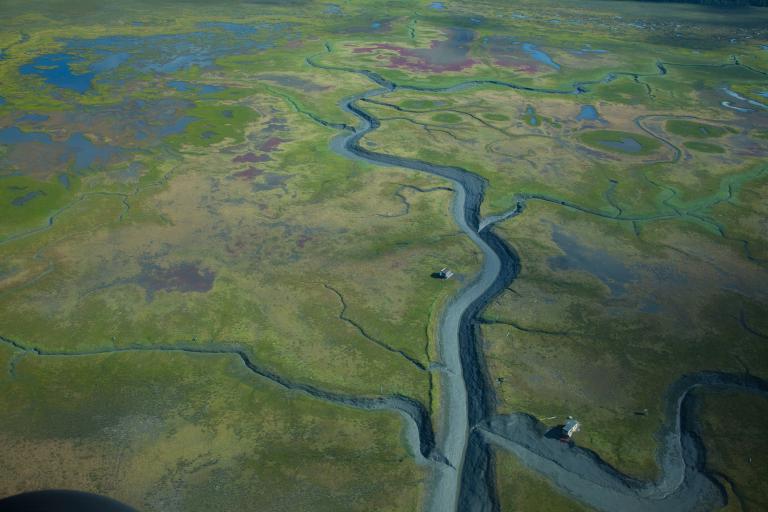Next year, New York will break ground on the first section of a U-shaped wall around Lower Manhattan designed to guard against the next hurricane with the strength of Superstorm Sandy. Some believe so-called “gray” infrastructure projects like this one represent the future of climate resilience – imposing, impenetrable, and decidedly humanmade. Others believe resilience should take on a greener hue.
New Orleans is preparing for storm surges by creating a series of wetland terraces that will absorb floodwater from neighboring streets. The state of Louisiana is working to resurrect coastal wetlands around the Big Easy that have been lost to the sea. These structures will supplement the city’s system of levees and canals.
Natural structures defend against storm surges more deftly than concrete barriers. Rather than throw up a shield against an oncoming wave, “living shorelines” feint and parry, absorbing the impact over a broad expanse. According to a 2012 study, a “sufficiently wide and tall vegetation canopy” can reduce flooding by up to 40 percent, meaning shorelines endure less damage and recover more quickly from severe storms. Natural defenses also support biodiversity by lending a home to birds, fish, and other creatures.
Living shorelines offer another important advantage. Levees and dams, built to control flooding, have contributed to the loss of wetlands around New Orleans. Historically, the Mississippi River delivered silt to low-lying terrain, replenishing lands at risk of sinking below the water. Levees have since confined the path of the river, guiding sediment away from disappearing wetlands and straight into the Gulf of Mexico.
Today, 14 percent of the U.S. coastline is rimmed by concrete. The specter of rising seas will prompt states and cities to consider the construction of even more expensive and obtrusive humanmade barriers like the embankment planned in Manhattan. In an effort to cut costs and preserve ecosystems, the Army Corps of Engineers is looking to expedite the approval of living shorelines, making it easier to develop natural structures that are able to fend off storm surges.
This is a fundamentally different approach to infrastructure and one that will not work in all places. But communities that are able to nurture shoreline ecosystems will be better suited to a changing climate as their wetlands, swamps, and mangroves will lessen the impacts of sea-level rise for decades to come.
This story was written and produced by Nexus Media.



